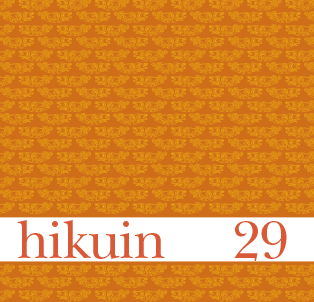Fra antikristne symboler til »ophitisk kunstsmag«
Dyrestil i oldtid og nutid
Resumé
From anti-Christian Symbols to Ophitic Taste Animal art in prehistory and now
By Karen Høilund Nielsen
Throughout the post-Roman period, zoomorphic decoration has been widespread in Scandinavia, while in certain periods the same has been the case over much of the rest of Europe. In the study of this period in more recent times the animal art has been treated as of great significance; indeed for a long time was the only material available for scientific study. This has had a profound influence on the history of such research, an influence which remains substantial today. The subject of animal art is not simply a matter of style, but also of typological, chronological, relational, social, mythological, religious and cosmological questions. The history of scholarship has been very different in relation to the two periods concerned, the Germanic Iron Age and the Viking Period. The styles of the Germanic Iron Age were defined at an early stage and have remained largely unaltered since. The Vikingperiod styles, by contrast, are still an issue of debate. As a result the two periods are treated separately, and in very different ways. Animal art may also be the focus of a contemporary written source. In 747 Boniface referred, in a letter to Cuthbert of Canterbury, to »superstition« embodied in costume in the form of wide bands of snakes along the edges. Precisely this can be seen in preserved textiles from Evebø and Mammen. Although Boniface clearly regarded animal decoration as heathen, it came to be deliberately used by the Church. As early a scholar as C.J. Thomsen recognized animal art as something special, and alluded to it as the Ophitic taste. Subsequently he distinguished an earlier and a later style: snake-motifs as opposed to dragon-motifs. The snake-motifs included, for instance, the D-bracteates, and the dragon-motifs of the Jellinge cup. Thomsen thus took the first steps on the road towards the comprehensive research into animal art that has subsequently been undertaken.
Referencer
Antiqvariske Annaler III, 1820.
Antiqvariske Annaler IV, 1827.
Die Briefe des heiligen Bonifatius und Lullus, Hrsg. v. Michael Tangl. Epistolae selectae in usum scholarum ex monumentis germaniae historicis separatim ed, 1. Berlin 1916.
Dedekam, H. 1925: To tekstilfragmenter fra folkevandringstiden. Evebø og Snartemo. Bergens Museums Aarbok 1924-1925. Hist.- Antik. række nr. 3.
Dierkens, A. 1998: Christianisme et "paganisme" dans la Gaule septentrionale aux Ve et VIe siècles. I: D. Geuenich (red.), Die Franken und Alemannen bis zur ”Schlacht bei Zülpich” (496/97). Ergänzungsbände zum Reallexikon der Germanischen Altertumskunde, 19. Berlin/New York, 451-474.
Klindt-Jensen, O. & D.M. Wilson 1965: Vikingetidens kunst. København.
Kristoffersen, S. 2003: Ting og tid – et eksempel fra Trygsland i Vest-Agder. I: P. Rolfsen & F.A. Stylegar (red.), Snartemofunnene i nytt lys. Universitetets kulturhistoriske museer, skrifter nr. 2. Oslo, 133-145.
The Letters of Saint Boniface translated by Ephraim Emerton with a new introduction and bibliography bye F.X. Noble. New York. 2000.
Malmer, M.P. 1963: Metodproblem inom järnålderns konsthistoria. Acta Archaeologica Lundensia Series in 8°, 3. Bonn/Lund.
Müller, S. 1880: Dyreornamentiken i Norden. Aarbøger for nordisk Oldkyndighed og Historie 1880, 185-405.
Salin, B. 1904: Die altgermanische Thierornamentik: Typologische Studie über germanische Metallgegenstände aus dem 4. bis 9. Jahrhundert, nebst einer Studie über irische Ornamentik. Stockholm.
Speake, G. 1980: Anglo-Saxon Animal Art and its Germanic background. Oxford.
Thomsen, C.J. 1836: Ledetraad til Nordisk Oldkyndighed. Kjøbenhavn.
Vierck, H. 1978: Religion, Rang und Herrschaft im Spiegel der Tracht. I: C. Ahrens (red.), Sachsen und Angelsachsen. Hamburg, 271-283.
Worsaae, J.J.A. 1869: Om Mammen-Funder. Aarbøger for nordisk Oldkyndighed og Historie 1869, 203-218.
Åberg, N. 1943: The Occident and the Orient in the art of the seventh century. 1: The British Isles. Stockholm.
Downloads
Publiceret
Citation/Eksport
Nummer
Sektion
Licens
Forfatter og Forlag.





